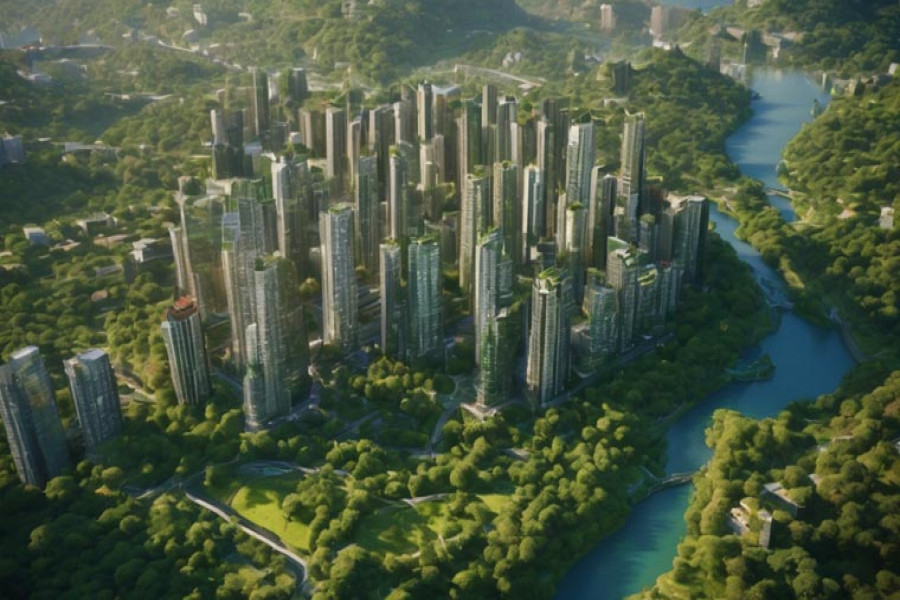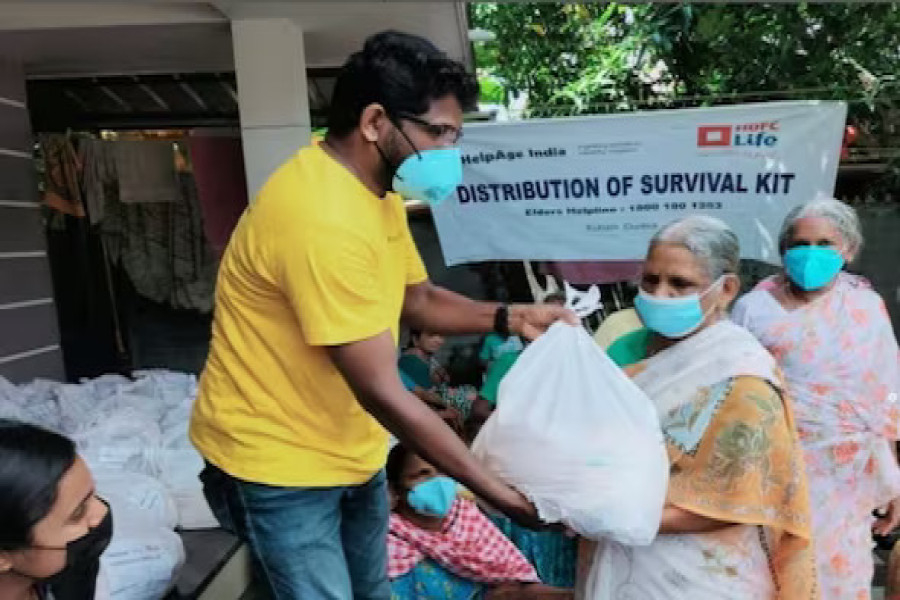India, the world’s largest democracy, is a land of more than a billion dreams. An overwhelming majority of these dreamers find their roots in villages. These are people who, generation after generation, have braved challenges like poverty, unemployment, and lack of opportunities, and have risen to emerge as changemakers for themselves and the communities they live in.
Model Gaon (Model गाँव) is an initiative working towards transforming Indian villages into the best version of themselves — model villages. The project aims to make villages free from all the evils that prevent equitable development. The idea of the initiative and its development model is based on my previous work as District Magistrate in Banda, Uttar Pradesh. I continue to mentor this initiative with all my administrative and ground-level experience. My efforts towards developing villages or clusters are fundamentally centred around three core principles.
First, a no-or-low-cost model where a lack of resources is never a deterrent to development. The second is convergence, where available resources are utilised in an innovative manner, converging its benefits on a core focus area. And third, through people-participation, each project should be designed for the people and by the people, so that they are always in charge of their own growth.
Since Independence, India has witnessed progress in development reaching villages. However, I believe there is much left to be done. The biggest lacuna is the lack of beneficiary participation in planning for their own development. A common villager hardly gets the opportunity to have a say in deciding the nature of development work to be executed in their village. Analysing it further, one realises that the common villager today is also largely not aware enough to make any informed contribution. And this is one of the biggest reasons why rural development in India is still slow-paced.
Second, while the centre and state governments have made many exemplary welfare schemes, their understanding by common villagers is poor. This prevents the true benefits of such schemes from reaching the people they are designed for.
During my stint in Banda as the District Magistrate, I took it upon myself to try and improve the perennial water crisis there. I chose not to get entangled with typical issues of funding and resources. Instead, I adopted the approach of people-participation and convergence of existing resources, manpower, ideas, and activities. Using this, we worked on changing people’s mindsets.
Through our mass mobilisation activity, we were able to bring about an increase in the groundwater table by 1.34 metres. This significant increase in water levels also resulted in an increase in agricultural productivity by more than 18 per cent. While these were substantial results for people’s welfare, this, and many such activities, inspired us to deduce a model of development through this initiative, which formed the genesis of Model Gaon (Model गाँव).
The essence of the Model Gaon project lies in its attempt to create a ‘demand for development’ by the people at the bottom of the pyramid. Most of the development initiatives’ designs lack direct participation from the end beneficiary. This blunts the impact of these initiatives on the ground.
Changing mindset at the grassroots level
Model Gaon engages with common villagers and works towards changing the mindset of the people at the grassroots level through focused capacity building towards identified target audiences like farmers, constitutional village heads, local women, youth, Village Level Entrepreneurs (VLEs) etc. Model Gaon endeavours to generate in people a ‘need’ for development, resulting in villagers starting to ‘demand’ a better life and local ecosystem. This then ensures accurate meeting of these demands through relevant and insightfully designed development initiatives.
Model Gaon aims to achieve these through three simple steps. First, a village manifesto, a free and simple digital tool to create an agenda for development that sensitises villagers towards the true meaning of development and different areas where it should take place. Second, an empowering campaign called ‘changemaker’, where social-minded people get trained in practical skills and are guided to become leaders of change in their villages. Third, an agri-to-agribusiness project encouraging small and marginal farmer collectives and value addition in agriculture.
Model Gaon provides support services for agri-ecosystems to evolve as a business unit with multiple profitable offerings. The project’s awareness drive has already created footprints across 21 states in India, with around 10 Gram Panchayats (village clusters).
One stand-out positive impact of our outreach was its mass acceptance during the recently concluded Gram Panchayat elections held in Uttar Pradesh. Among the gram pradhans who were able to mobilise their villages in Uttar Pradesh using Model Gaon’s village manifesto tool and successfully contested on an agenda of development are Ms Kumari Reena, Raya Gram Panchayat (Etah), Ms Meena Devi, Patti Dharamdas Gram Panchayat (Gorakhpur), Mr Pradeep Kumar, Kanthari Gram Panchayat (Firozabad), Mr Krishan Mohan Patel, Laxmipiur Siwala Gram Panchayat (Maharajganj) and Ms Swikrati Katiyar, Jahanganj Gram Panchayat (Farrukhabad).
Model Gaon is working with these enterprising gram pradhans to create a baseline for their panchayats and will next help them create an inclusive village development action plan. This will then lay down a roadmap for development, which shall be monitored and appraised on a regular basis.
Model Gaon’s associations and wings
A large number of Farmer Producer Companies (FPCs) are associated with Model Gaon. They are given training and input on growing their business and improving farmer incomes. Samradheesheel Farmer Producer Company in Etah and Bramhkrishi Bio Energy Producer Company in Gorakhpur are a few of the success stories after association with Model Gaon. They have seen a steady increase in business and efficiencies in their operations.
A dedicated women’s wing has also been created where focussed discussions on issues related to them are held. Likewise, a dedicated youth wing helps Model Gaon mobilise and energise rural youth, empowering them to contribute towards the nation’s development. The VLEs operating Common Service Centres (single internet access point in each village) across Uttar Pradesh are collaborating with Model Gaon by becoming part of our development-delivery system. These are changemakers who are helping us transform the communities they are a part of.
Take for example the case of Mani Shanker from Ballia, who after associating with Model Gaon, has been actively educating farmers about organic farming and mobilising people. This is helping his village build consensus around an agenda of development. Likewise, Ram Chander Verma from Ayodhya is deeply involved in increasing the reach of education in villages through his Ekal mission, supported by Model Gaon.
I am glad to mentor a revolutionary idea like Model Gaon and its ambitious team to create a real impact on the ground. India lives in villages and the only way of ensuring their holistic development is through empowering villagers with knowledge. Informed villagers will play an active role in contributing to the development and lead the change they have always wanted to see. Model Gaon is a people’s movement in the making, towards transforming rural India.
The author is an IAS officer serving as AMD NHM U.P. He is also mentoring Model Gaon, a non-profit initiative based on his model of cluster development when posted as DM Banda.
Reference Link:






























.jpg)